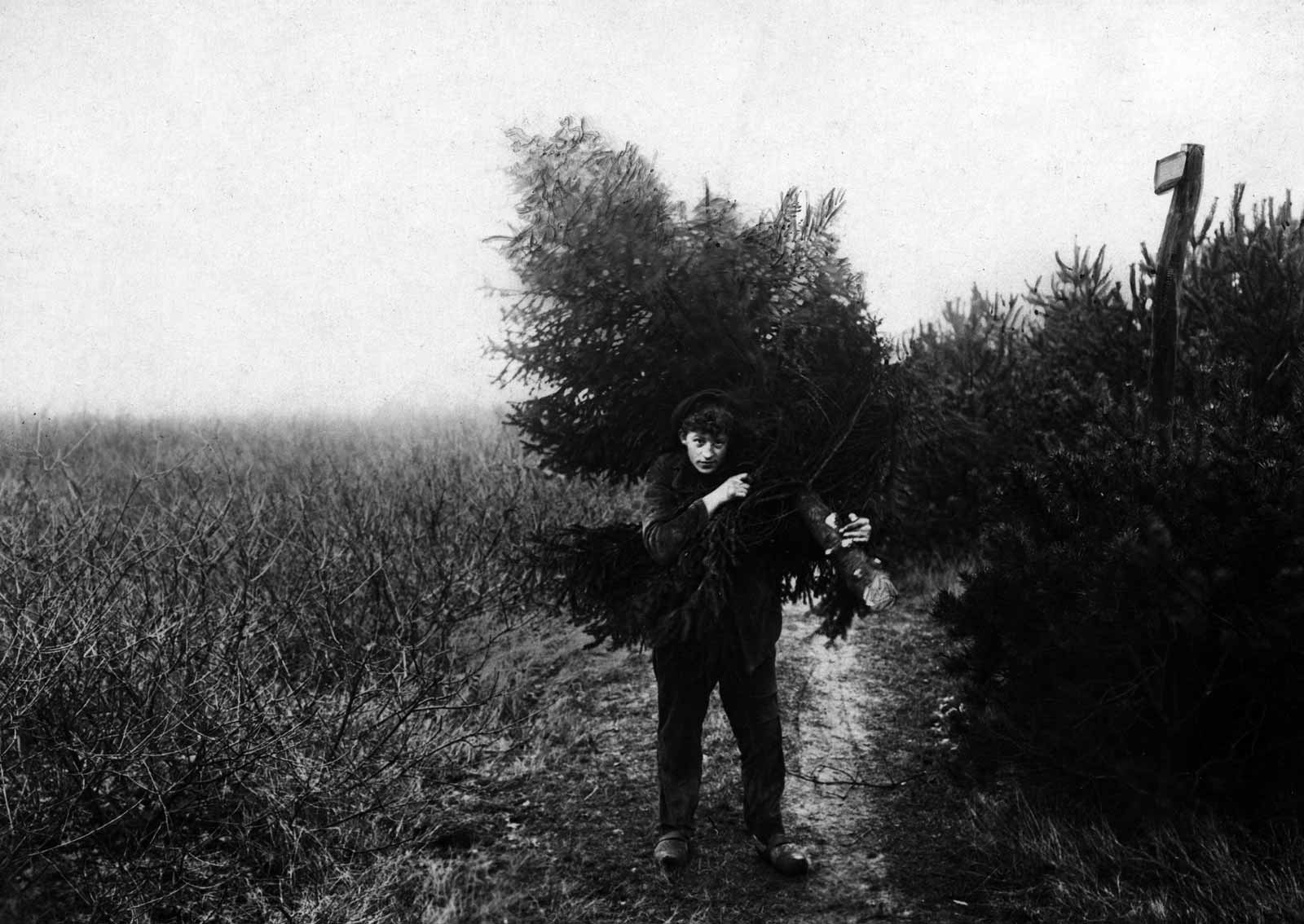My first summer job was trimming Christmas trees in July. It was a shitty job, like most summer employment, badly paid and of dubious purpose. You might think that pines, spruces, and firs grow naturally into their pyramidal shapes. “Back, behind us,” Elizabeth Bishop writes in one of her beautiful poems about Maine, “the dignified tall firs begin./ Bluish, associating with their shadows,/ a million Christmas trees stand/ waiting for Christmas.” The truth is that evergreens are as various in their search for sunlight as the rest of us Earth-dwellers. Branches splay out every which way; two or three prongs vie for the apex; spindly trunks wind their way around rocks or adjacent oak trees. They do not look as though they are auditioning for Christmas cards. It was to wage war on this natural idiosyncrasy that we tree-trimmers were hired, to march up and down the long rows of trees and introduce some uniformity into the chaos.
I don’t remember how the news reached us, in our rust-belt town in Indiana, that boys were being hired, at ninety-five cents an hour—minimum wage, we were informed, as though no additional lure were required—to trim Christmas trees in neighboring Ohio. We answered the call like birds summoned south in September. Loaded into flatbed trucks in the morning darkness, we were driven across the nearby border, under an ugly green arch that identified our town, absurdly, as the “Gateway to the East,” and on to Brookville. We weren’t exactly migrant workers crossing the Rio Grande. And yet, for half the year, Indiana was in a different time zone than Ohio, cussedly refusing (just as our county rejected fluorinated water as a Commie plot) to join the rest of the East in Daylight Savings Time. “If God wanted us to have more daylight,” according to a letter in the local Palladium-Item, “He would have given it to us.”
It was scorching hot in July, of course, but we wore long-sleeved flannel shirts and blue jeans against the pine needles. Armed with heavy shears, we moved methodically down the rows of trees, making executive decisions about which tall branch would henceforth be the top, where the angel or star would be placed. Contenders were sacrificed, along with overlong branches that exceeded the length of those below. When we were done with each tree, it looked, sometimes a little forlornly, as if it just might pass muster in a living room. Five more months of growth would hide the surgery.
My parents were ambivalent about Christmas in general, and always insisted, scornfully, on a “live tree.” We didn’t buy our tree from a Christmas tree farm. We bought it from a nursery. With its bulky ball of roots wrapped in burlap, the tree, even if only two or three feet tall, was extremely heavy, requiring all three brothers to hoist it to the living room. There, it was ensconced in a metal tub and decked with our mostly homemade decorations, along with the candle-holders, outfitted with little clasps, imported from Germany.





